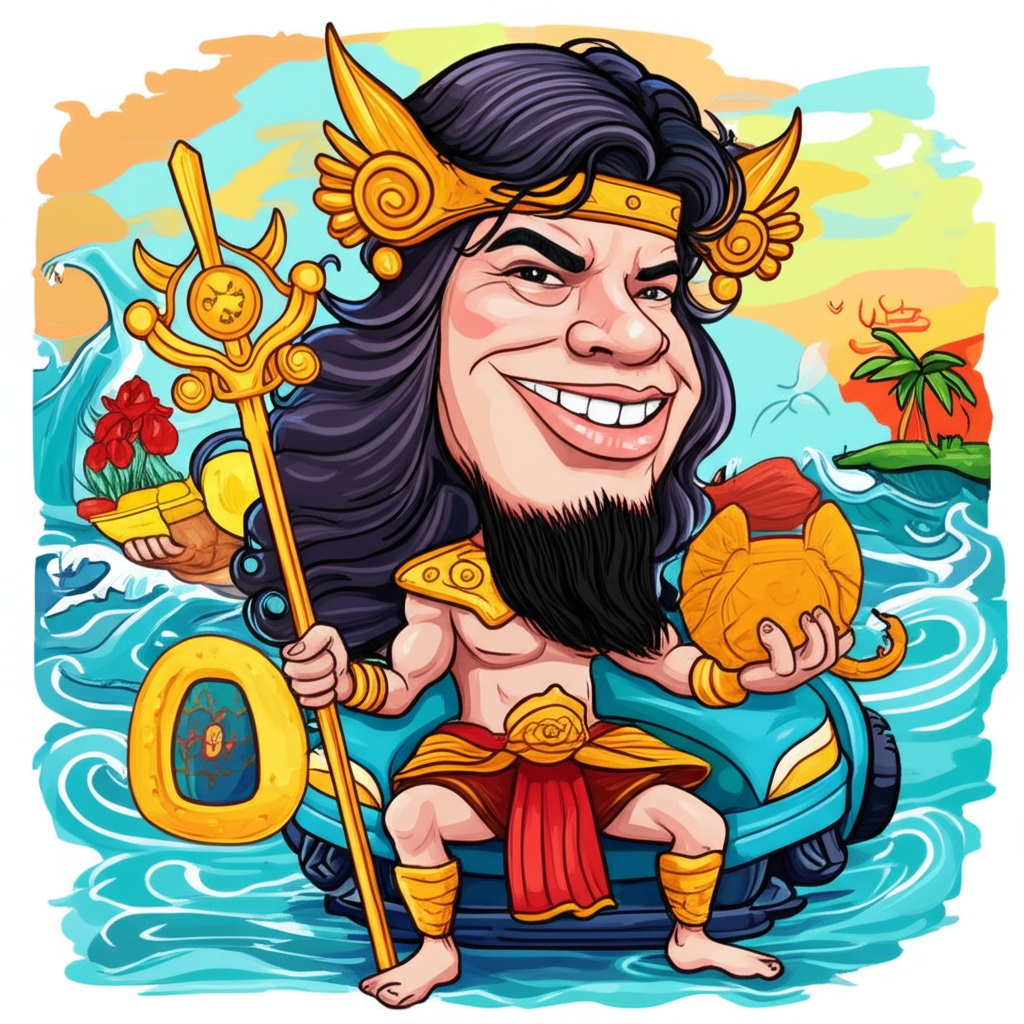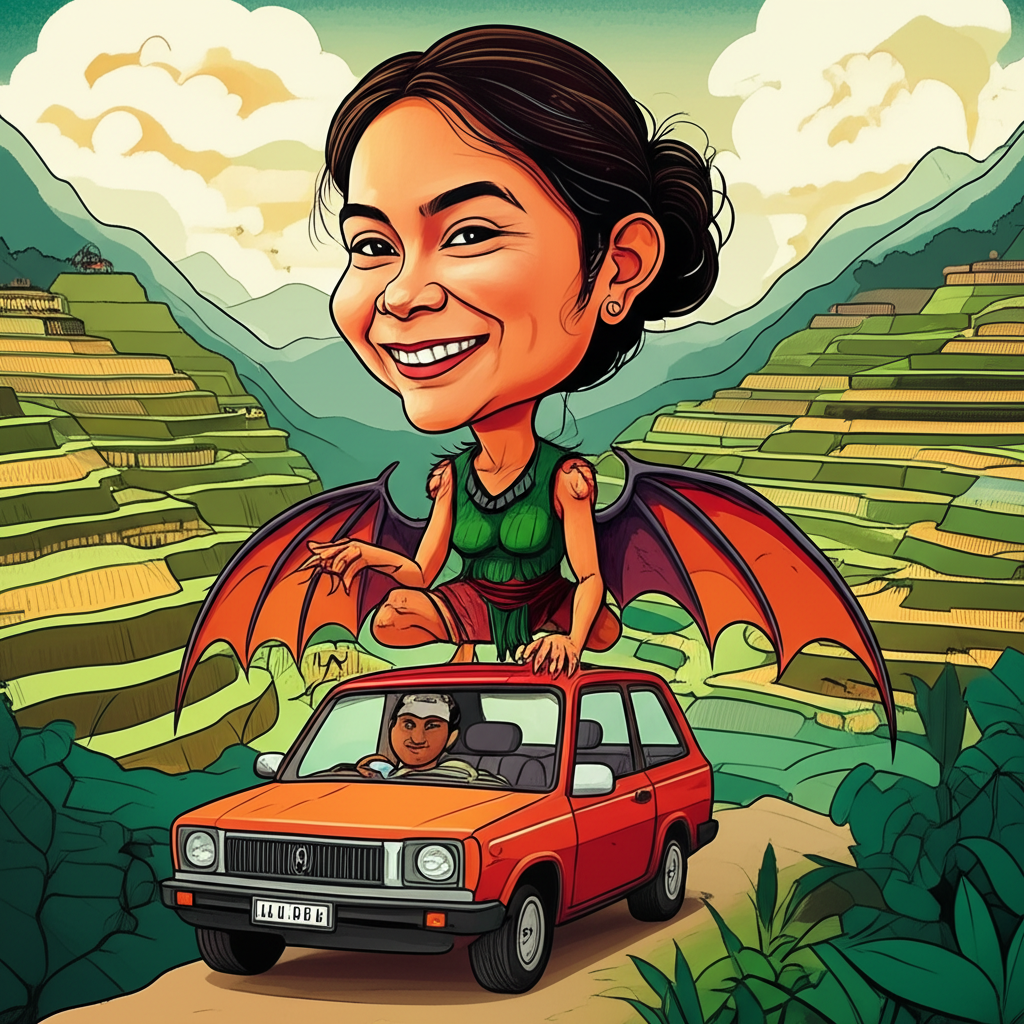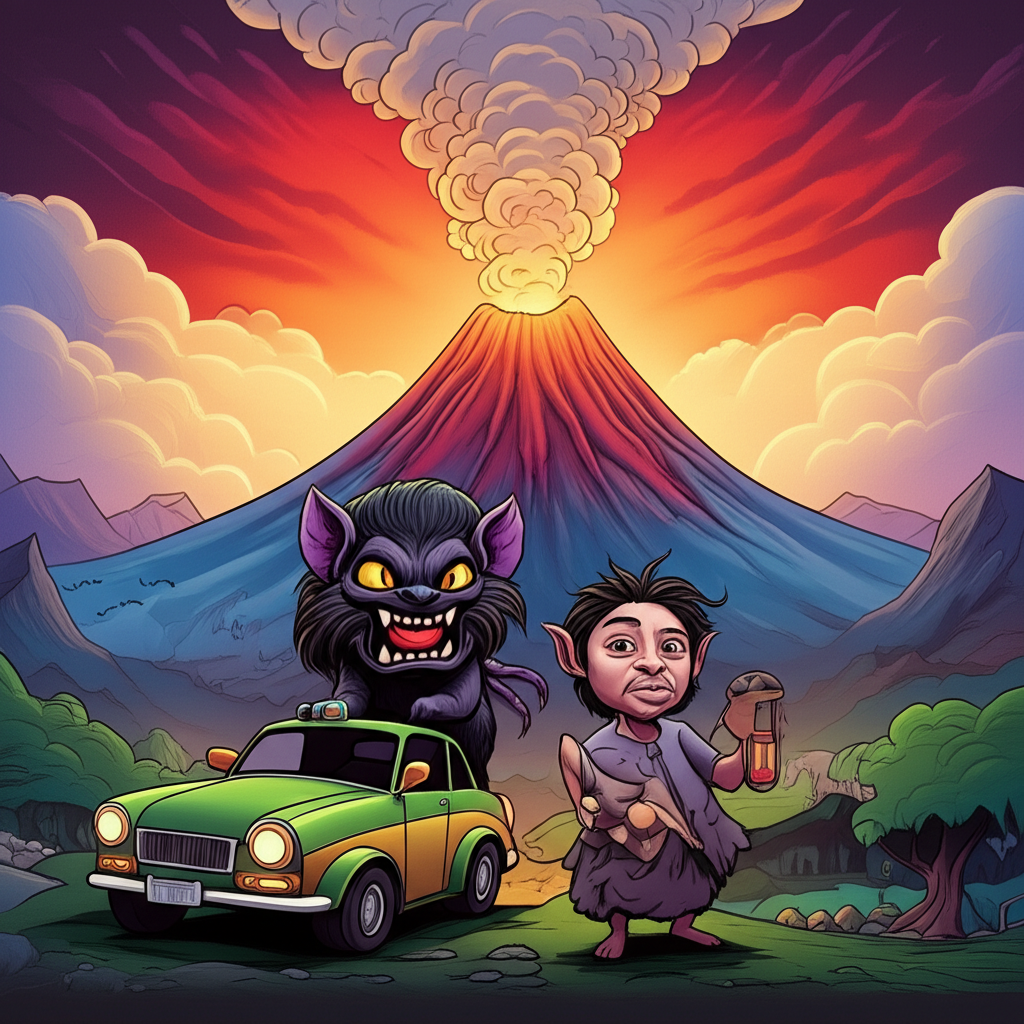
From the sun-drenched islands of the Philippines, specifically the rich tapestry of Tagalog folklore, emerges a captivating narrative – the tale of Amanikable and the War of Creation. This is not a chronicle of historical events, nor a decree of divine truth, but rather a vibrant testament to the storytelling traditions of ancient peoples, a glimpse into their attempts to understand the mysteries of existence. These stories, passed down through generations by word of mouth, paint a picture of a world brimming with wonder, where the very fabric of reality was a canvas for epic struggles and the birth of all that is.
The cultural milieu from which this myth arises is one deeply connected to the natural world. Imagine the pre-colonial Philippines, a land of verdant forests, sparkling rivers, and vast, undulating seas. The Tagalog people, like many indigenous societies, lived in close harmony with their environment. Their understanding of the cosmos was often anthropomorphic, imbuing natural forces and phenomena with personalities and intentions. The cyclical nature of the sun and moon, the fury of storms, the bounty of the harvest – all these were seen as expressions of powerful, often unseen, forces. Their worldview was animistic; they believed that spirits resided in all things, from the mightiest trees to the smallest pebbles. In this context, the creation of the world was not a singular, passive event, but an active, dynamic process, often involving a grand, primordial struggle.
Central to this narrative is the figure of Amanikabile. He is depicted not as a benevolent deity in the Abrahamic sense, but as a potent, primal force, often associated with the sky and the heavens. His name itself hints at this celestial connection. While specific visual representations are scarce, Amanikabile is envisioned as a being of immense power, embodying the boundless expanse of the sky. His symbolic attributes are those of dominion and ultimate authority. He is the sky-father, the overarching presence from which all else originates. In some interpretations, he might be seen as representing the vast, unpredictable nature of the heavens, capable of both nurturing life with sunlight and unleashing destructive storms. He is the ultimate source, the prime mover in this ancient cosmic drama.
The "War of Creation" as it pertains to Amanikable is not a battle fought with swords and shields, but a conceptual struggle for dominion over the very act of creation itself. The tales often begin in a primordial void, a state of formlessness and potential. It is in this nascent stage that Amanikable, the celestial power, asserts his will to bring forth existence. However, the narrative is not always a solitary endeavor. Often, other primal entities or forces are introduced, each with their own vision or desire for how the world should be shaped.
In one iteration of these tales, the world is often described as being formed from the primordial waters and the sky. Amanikabile, from his celestial perch, might have envisioned a world of perfect order, a reflection of the vast, serene sky. But then, other forces, perhaps embodying the chaotic depths of the ocean or the restless earth, might have emerged with different ideas. The "war" then becomes a metaphorical conflict of wills, a clash of primordial desires that shapes the emerging cosmos. It could be a struggle between the serene order of the sky and the wild, untamed nature of the depths, or a contest between different creative impulses vying for dominance. The earth, the seas, the mountains, the rivers – each element might have been forged in the crucible of these cosmic disagreements. The very laws of nature, the patterns of life and death, could be seen as the enduring echoes of this initial, fundamental clash.
The symbolism embedded within these creation tales is rich and multifaceted. Amanikabile, as the sky-figure, can be interpreted as representing the overarching order, the cosmic blueprint, or the ultimate source of inspiration. His potential conflict with other primordial forces might symbolize the inherent duality in nature – the interplay of creation and destruction, order and chaos, light and darkness. These stories likely served to explain the seemingly inexplicable phenomena of the natural world to the ancient Tagalog people. The ferocity of a typhoon could be seen as a lingering echo of a cosmic battle, the fertility of the land a testament to a successful creative act. They also provided a framework for understanding their place in the universe, a sense of belonging to a grand, ongoing cosmic narrative. Furthermore, the concept of a struggle for creation could subtly inform their understanding of leadership and governance, suggesting that even the most powerful forces must contend with challenges and different perspectives.
In the modern era, the legacy of these ancient myths lives on, not as literal truths, but as a vital part of cultural heritage. In literature, Amanikable and the War of Creation tales might be retold in epic poems or fantastical novels, reimagining the primal forces and their cosmic ballet. Contemporary artists might draw inspiration from the imagery and symbolism to create striking visual interpretations. In popular culture, elements of these creation myths could find their way into video games, offering players a glimpse into a world shaped by ancient, powerful beings. Cultural studies scholars analyze these narratives to understand the worldview, values, and anxieties of ancient societies, shedding light on the evolution of human thought.
It is crucial to reiterate that these narratives are products of human imagination and a historical attempt to comprehend the universe. As Muslims, we recognize that only Allah (God) is the true, singular Creator and Sustainer of all existence. His divine power is absolute, and His creation is a testament to His infinite wisdom and mercy. These ancient tales, while fascinating from a cultural and historical perspective, do not alter this fundamental truth.
The stories of Amanikabile and the War of Creation serve as a powerful reminder of the enduring human need to tell stories, to weave narratives that give meaning to our existence and explain the world around us. They are a testament to the boundless creativity of the human mind and the rich tapestry of cultural heritage that continues to shape our understanding of the past. By studying these myths, we gain not only insight into the beliefs of ancient peoples but also an appreciation for the enduring power of storytelling as a means of cultural transmission, imagination, and the exploration of the deepest questions of our being.





